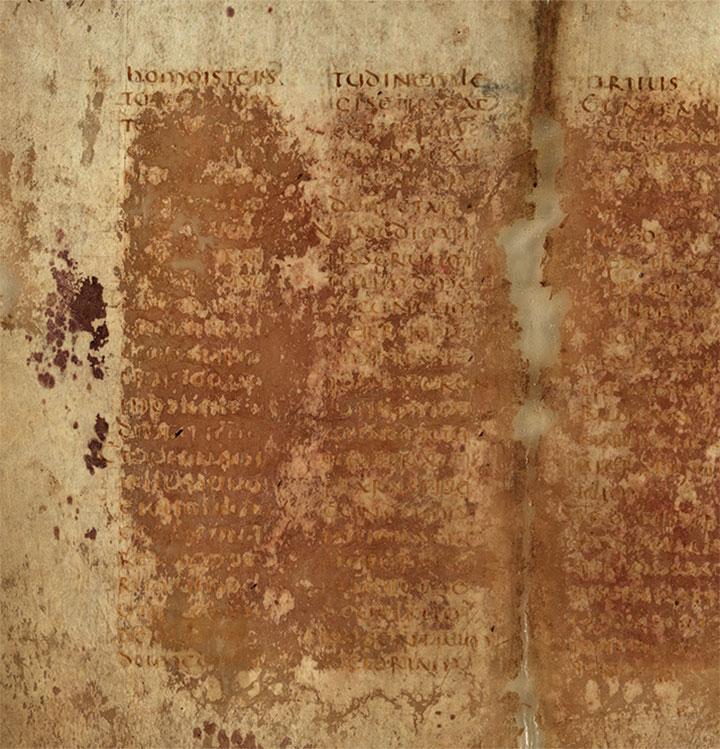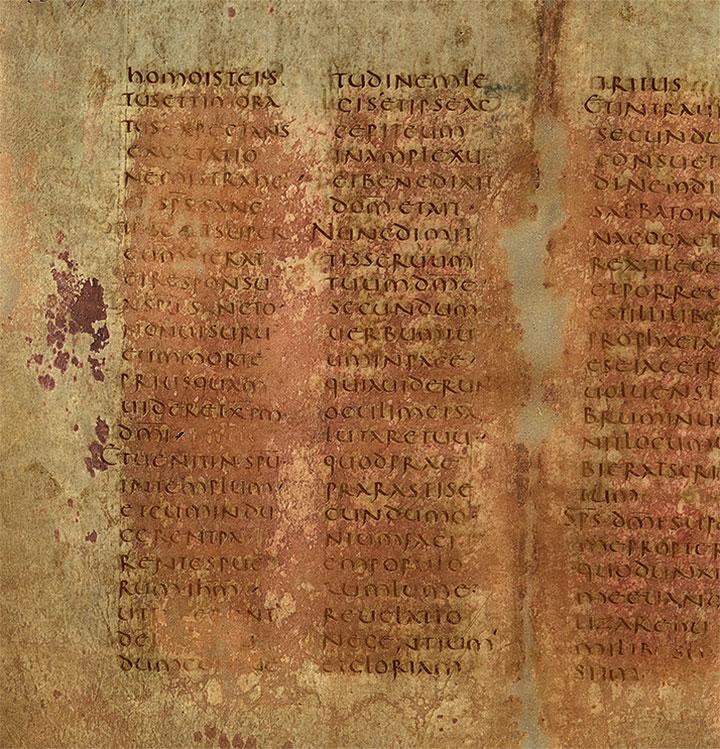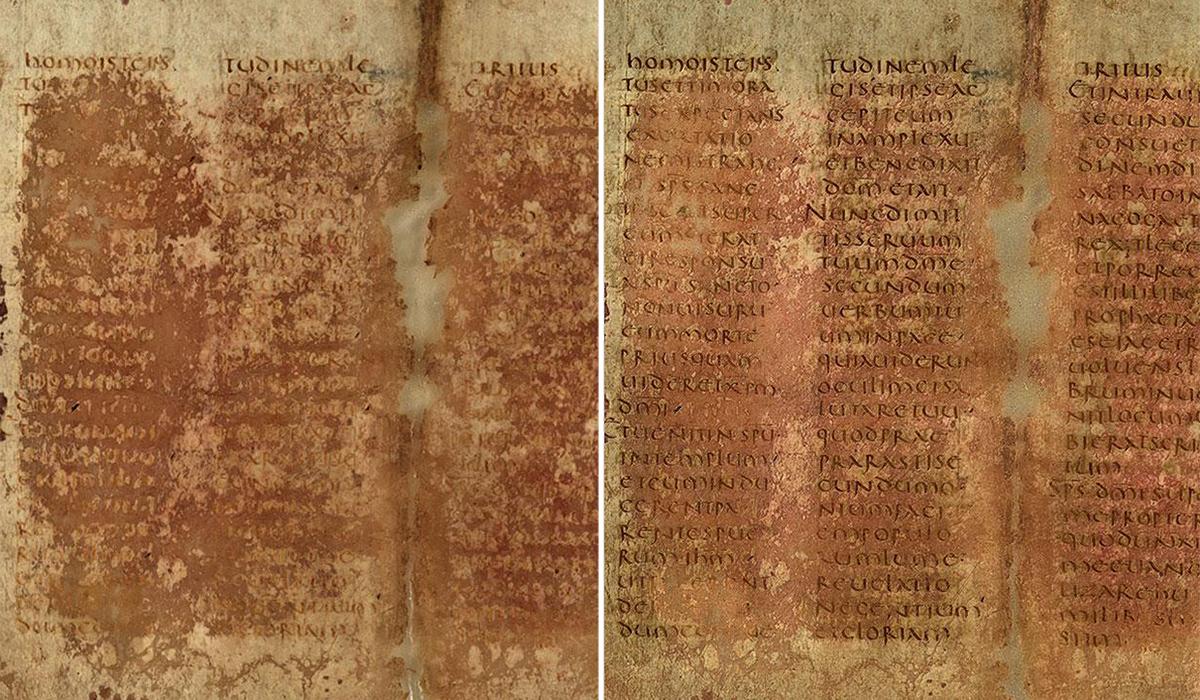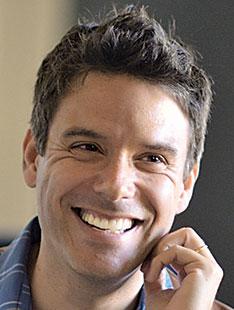Eight years ago, Gregory Heyworth *01 was laboring over a long French medieval poem called “Les Eschéz d’Amours” — “The Chess of Love.” At the time he was a professor of English and medievalist at the University of Mississippi, and this poem — the last important poem of the European Middle Ages never to have been edited and annotated in a modern edition — had obvious appeal.
But there was a reason why no editor had succeeded in the past: The one existing manuscript of the poem had been horribly damaged in the World War II firebombing of Dresden, Germany. Heyworth spent five years trying to recover traces of the writing, working with an ultraviolet lamp, a technique then considered state of the art.
He began reading about how to recover old documents and came across the story of the Archimedes Palimpsest: a 13th-century Byzantine prayer book assembled from the pages of other manuscripts, including the pages of two lost treatises of the Greek mathematician Archimedes that were created in the 10th century. (A palimpsest is a document from which the text has been erased so the pages can be reused.) Researchers had managed to recover the erased Archimedes treatises using multispectral-imaging technologies in which photos are taken at different wavelengths of light. Heyworth reached out to some of the scientists involved in that project to ask whether these techniques might work for “Les Eschéz d’Amours” — and they did.
Now an associate professor of English and textual science at the University of Rochester, Heyworth has built a research agenda around using imaging science and techniques to restore and re-create damaged and faded documents that had previously been lost to history. Heyworth estimates that there are at least 60,000 manuscripts from before the 16th century that are illegible because of damage. Through his program, the Lazarus Project — named for the Biblical Lazarus whom Jesus raised from the dead — Heyworth raises funds for restoring such manuscripts through multispectral imaging. He and his students and collaborators have tackled the restoration of documents around the world, from the Folger Shakespeare Library in Washington, D.C., to the cathedral library of Vercelli, in Piedmont, Italy.
“We spend a lot of time in dark rooms in beautiful places,” Heyworth says of his work with students and collaborators photographing old documents with specialized cameras. This multispectral photography not only helps preserve — or in some cases, discover — lost or fading texts, it is also far less destructive than some previous preservation techniques. “In the past people have used chemical reagents — sometimes to very good effect, but it’s also destroyed the manuscripts,” Heyworth explains. “As we evolve in conservation methods we try to find techniques that are less and less invasive.”


Multispectral-imaging techniques like those employed by the Lazarus Project are derived largely from methods that were developed for environmental remote sensing, says Roger Easton Jr., a professor of imaging science at the Rochester Institute of Technology and the lead imaging scientist on the Archimedes project. (Easton is also a board member of the Lazarus Project and a frequent collaborator of Heyworth’s.) These same imaging technologies can be used to take overhead images to identify which crops need more water, and to detect buried cities from overhead images, Easton says, but using them to restore old manuscripts has generated interest in the techniques among a wider audience.
“Finding lost manuscripts really grabs people’s attention,” Easton says. “It helps bring in interest and funding to support the science innovations as well as the restoration activity.”
Stephen Ferguson, the acting associate University librarian for rare books and special collections at Princeton, said the work of the Lazarus Project has contributed to the field of heritage science by giving scholars new ways to understand the material objects they study. “It shows what more we have yet to learn about objects that have been in our collections in the world’s great libraries for generations which only now are becoming better understood,” Ferguson says.
Heyworth, who trained as a medievalist comparative-literature scholar, now holds joint appointments in the English, history, and computer science departments at Rochester and runs a lab that more closely resembles an engineer’s domain than a literature professor’s. His work is highly collaborative, often involving scientists as well as students, librarians, and curators — many of whom are as struck as he is by the experience of recovering something thought to be lost forever. With a grant from the National Center for Preservation Technology and Training at the National Park Service, Heyworth built a transportable imaging lab for use all over the world.
“The moment when, for the first time, you see an object that no one’s ever seen before — that’s when people in the room literally gasp,” Heyworth says.
Heyworth saw that reaction when he was restoring the Codex Vercellensis, the earliest translation of the Gospels into Latin, and a curator in the Vercelli Cathedral who had been conserving the document for most of her life got her first look at what his team had accomplished. The codex dates from the first half of the fourth century — and as Heyworth explained in a TED talk in 2015, it is “the closest we can come to the Bible at the time of the foundation of Christendom under Emperor Constantine, and at the time also of the Council of Nicaea, when the basic creed of Christianity was being agreed upon.”
The badly damaged manuscript had been handled in swearing-in ceremonies for centuries; it had been encased in gelatin and eaten away by a tubercular fungus. Many of the manuscript’s pages were illegible to the naked eye, with large brown stains and splotches covering indecipherable smudges. Heyworth and his collaborators spent two weeks in Vercelli photographing the manuscript, and then analyzed and reworked the images they had collected for several months following the trip to achieve their restoration.
When the curator saw the images the restoration team had uncovered, “she had to sit down, and all she said was ‘Madonna,’” Heyworth recalls. “It really just validated her life work; there was something there — it wasn’t just an object that important people had touched.”
While he has strayed somewhat from his comparative-literature roots, Heyworth emphasizes that literature and text are still at the heart of his work. “In most digital humanities the goal is to translate text into data; our goal is to translate data back into text,” he says. “Our end is still the book.”
Josephine Wolff ’10 is an assistant professor of public policy and computing security at the Rochester Institute of Technology.
WATCH Gregory Heyworth — ‘How I’m discovering the secrets of ancient texts’
Courtesy TED



